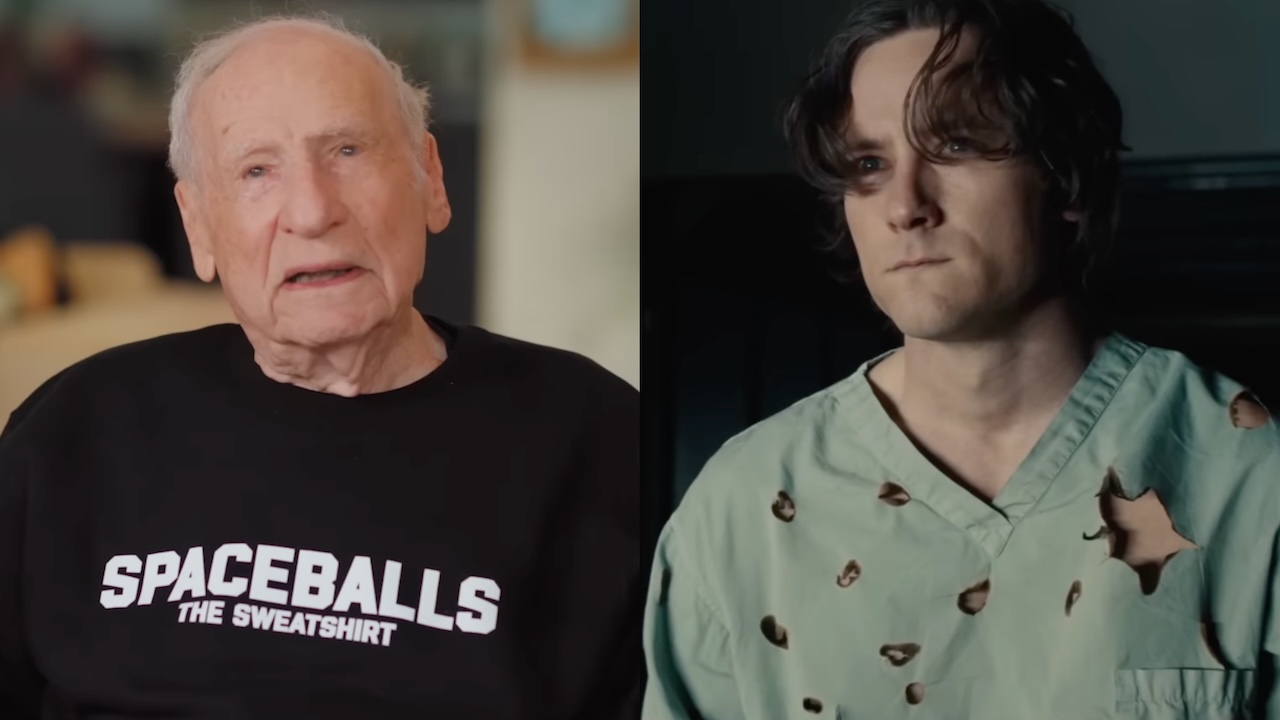10 Years Later: How Cloverfield Completely Changed The Way Movies Could Be Marketed
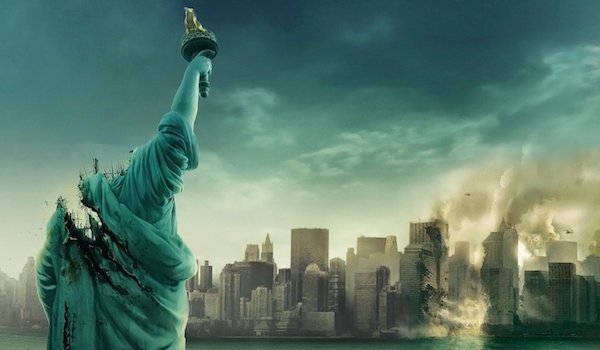
On January 18, 2008; something had found us. A giant monster named Clover, awoken from its slumber and separated from its mother, tore up New York City, making life a living hell for the Big Apple over the course of one eventful night. At least, that was the story that was playing out on theater screens that night, as Cloverfield made its debut to a world that had been primed to its existence for months beforehand. But what could have been a run of the mill, micro-budget monster movie, actually was something much greater: it was a film that changed the way that movies could be marketed, and on a massive scale.
Through some pretty simple, yet extremely measured steps, the folks behind Cloverfield's big-ticket success launched a brand that carries on to this day. This year will see the release of a third film in the anthology started a decade ago by producer J.J. Abrams, writer Drew Goddard, and director Matt Reeves, so now is the best time to look back on that first installment -- which opened in theaters on this day 10 years ago -- to see just what made Cloverfield's marketing campaign so ingenious.
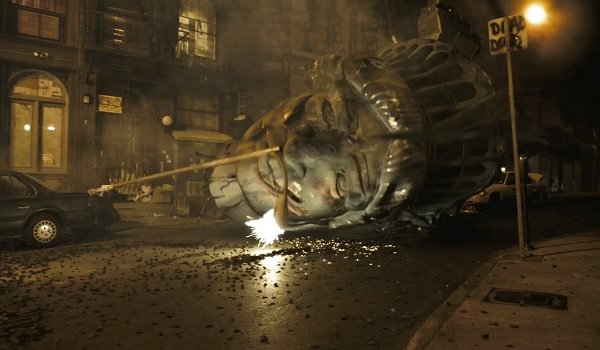
When The Marketing Actually Started
Most of the time, when you're marketing your would-be blockbuster franchise, you do it pretty far out. Take Paramount's Transformers franchise as a good example. Almost a full year before the original film's July 4th, 2007 release date, a short teaser was dropped to announce that Optimus Prime and his friends were on their way. (Watch that one here.) As luck would have it, Cloverfield would get a similarly cryptic introduction to the public, right in front of Transformers too, except it was different in two key ways: it was advertising a film set to release a little over six months later, and it lacked any inclusion of the film's name. Take a trip down memory lane, and watch that the teaser to Cloverfield all over again, below.
What began as a trailer that looked more like a feature film adaptation of Felicity turned into a fast-paced scramble for safety. All it took was that decapitated Statue of Liberty, and the screams proclaiming, "I saw it! It's alive! It's huge!' to seal Cloverfield's fate as an American prototype for a national monster to rival Godzilla himself. But exactly what was it about Cloverfield's teaser trailer that worked so well?
Ultimately, it was J.J Abrams' Mystery Box approach to marketing, which takes a story that is being sold to the audience, and conceals key pieces of information. Those pieces, to be revealed at a later date, are what other, bigger movies get to show in later trailers. So while Transformers would go on to show Optimus Prime, his allies, and his adversaries, Clover the monster wouldn't be shown until much later in the game. That lack of information teased an audience that was used to practically everything laid out pre-release, and it made the public excited to learn the truth of this new mystery film.
It all sprang from the childhood of director Matt Reeves and producers J.J. Abrams and Bryan Burk, who were all of the same mind when it came to how they were going to market Cloverfield. In fact, it resurrected an approach that all three collaborators had once encountered for a specific Steven Spielberg film. In an interview with Coming Soon, Reeves told the story behind that fateful event:
When we were kids, we'd go to movies, and there was one particular teaser trailer we all remembered for Close Encounters of the Third Kind. It was all this weird documentary footage and this eerie narrator who sounds like the scary guy from Frontline. ... We were like, 'What was that! I gotta see that, what the hell was that?' You didn't know who was in it, and before that trailer you didn't even know what Close Encounters meant. That was an exciting thing. You had a sense of discovery.
As the advertising of Close Encounters of the Third Kind had to eventually give away more of the details as to what its film would be about, Cloverfield ran its entire campaign like one, extended version of that classic teaser trailer. Which all hinged on what was shown, and what was hidden, within the Mystery Box of Abrams, Burk, and Reeves.
Your Daily Blend of Entertainment News

What The Marketing Showed... And What It Didn't
While Cloverfield's finished product would never drop the human interest angle that was teased in the footage showcasing Rob's farewell party, the film was undoubtedly all about one thing in its marketing phase: the monster. More importantly, it was the lack of the monster itself that stoked the fires of the imagination for audiences worldwide. And unlike the American remake of Godzilla another decade before it, there was neither hide nor hair of what Clover looked like in any of the trailers or posters.
Instead of posters teasing an eye, a tail, or even the shadow of a monster, Cloverfield gave us only a view of the damage that Clover would inflict upon New York City. Both posters released for the film were comprised of one image: a beheaded Statue of Liberty, and a trail that ran from the statue's island straight into the chaotic wreckage of New York. 95% of the film's marketing played out like the film: dancing around the monster, and showing us the panic and fear it created, as well as the damage it left behind.
And this strategy worked so well that it started the internet down a path of speculation that was already at a feverish pitch at the campaign's start. Cloverfield went from a film that was announced unexpectedly to a film that could be anything from a Godzilla remake to a Voltron remake, and even Matt Reeves and the rest of team behind Cloverfield were starting to have worries that this was going to make to big of a market for speculation. Reeves recounted to Coming Soon the following:
We turned to each other and said, 'Oh my God, this is too much too soon. This is only July, and the movie comes out in January! We better shut up or people are going to be deadly sick of us by the time it comes out.
By leaving out Cloverfield's biggest star, the film everyone knew was a "monster movie" effectively became one big jigsaw puzzle for everyone to figure out. What did this monster look like? Why was it terrorizing New York? And why are we following this random group of people that are criss-crossing in and out of its path? Questions we'd normally have a pretty good idea about the answers to had become big milestones left to be answered, in a movie that wasn't based off of any pre-existing property. Man was it exciting.
More importantly, the Cloverfield marketing machine did something else pretty well: it showed that the real emphasis of the film was going to be with the human characters and their perilous journey across New York City. So while the trailers inspired a multitude of questions about the monster, they also reinforced the fact that we'd be following Rob and his friends around the city during the main thrust of the film. But on top of showing a very select, very clipped bunch of moments from the film, the marketing team had another key strategy to bring the world of Cloverfield to life.
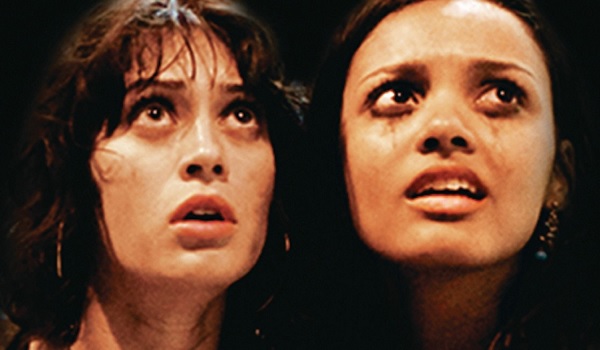
How The Marketing Went Above and Beyond
While the traditional ad campaign for Cloverfield was built on a careful release of limited information, there was a bountiful well of information about the world that the film inhabited on the internet. The trick was, people needed to know how to find it, as it was all dished out through an Alternate Reality Game, or ARG for short. With websites dedicated to in-universe assets such as the J.J. Abrams-created frozen drink Slusho, its parent company Tagruato, and a group of eco-terrorists known as T.I.D.O., a story began to form on just what Clover was, and where it came from.
And yet, the ARG for Cloverfield informed its audience of the world without having to even divulge information directly discovered in the film. A whole story about the world surrounding Clover's discovery, which was due to either a deep sea drilling platform or a top secret experiment operated by Tagruato, was told over the course of months through clues that the audience would obtain, decipher, and follow to the next step in the story. Along the way, videos from in-universe events would drop to further flesh out the world of Cloverfield, such as this video detailing a huge incident that foreshadowed Clover's trip to New York.
During an interview to promote Cloverfield ahead of its theatrical release, Matt Reeves spoke with IESB about how the viral marketing behind the film operated in the grand scheme of selling it to the masses:
It's almost like tentacles that grow out of the film and lead, also, to the ideas in the film. And there's this weird way where you can go see the movie and it's one experience... But there's also this other place where you can get engaged, where there's this other sort of aspect for all those people who are into that. All the stories kind of bounce off one another and inform each other. [...] To us, it's just another exciting aspect of the storytelling.
So while the audience didn't know any of the core characters by any information given in the trailers, they could easily hop onto MySpace and check out character profiles for Rob, Marlena, Beth, and Hud that looked eerily valid. Plus, they could get swept up in the disappearance of activist Teddy Hanson, whose girlfriend Jamie had a lot more screen time through video messages she sent her boyfriend on the internet than a random appearance as a woman passed out on a couch at Rob's going-away party. If you're interested to see how the whole universe tied together, and just how deep the Cloverfield backstory went, you can see that in the following video from the YouTube channel Inside A Mind:
The movie fed into the Alternate Reality Game, and the ARG fed into the film; and considering how Cloverfield became a then record-breaking box office smash, the strategy worked like a charm when it came to putting asses in seats. So well, that contemporaries like The Dark Knight and successors like Tron Legacy would both go on to develop their own ARGs to lead willing audiences down the rabbit hole. But, of course, the Cloverfield story doesn't end there, as this whole experiment had one lasting effect that's still a factor at this very moment: it created a viable brand out of an unknown quantity.
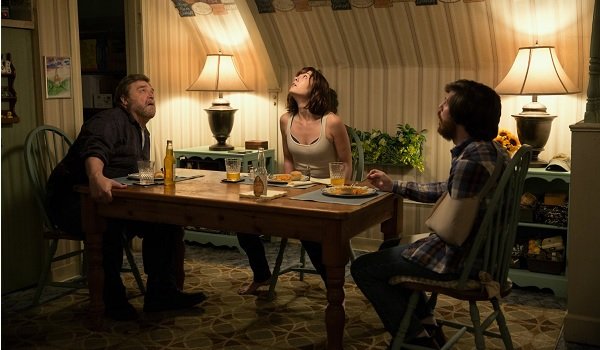
How It Created the 'Cloverfield' Brand
Almost immediately after Cloverfield turned into the event of January 2008, everyone had one question on their minds: when's the next one coming out? Thanks to the film's successful payoff of all the mystery it surrounded itself with, as well as a clever little audio snippet whispering "Help us" at the end of the film, the speculation market was booming yet again. The success of Cloverfield, both as a marketing experience and as a film, lead to a public hungry for any sort of follow-up, and as J.J. Abrams explained in an interview included with the home video release of 10 Cloverfield Lane, there was a specific catch to whether or not the franchise would ride again:
It was amazing how many times in doing press for other projects I would be asked about Cloverfield. You know, 'When's the sequel coming? Are you doing a sequel? What about Cloverfield 2?' To do something like that again, there has to be a great reason for it. If a Cloverfield sequel wasn't a literal Cloverfield sequel, but rather an original story. And what if the thing that many people are bemoaning, which is, 'Well, how come there aren't enough original stories now being made?' We thought, well this is actually a great opportunity to allow it to exist. There was a kind of DNA that felt like Cloverfield, though it wasn't the same characters, it wasn't the same monster, it wasn't a found footage movie.
That DNA found its way into a script acquired by Paramount's former independent shingle Insurge, which was originally titled The Cellar, but went on to be retitled Valencia. The story was of a woman injured in a car wreck, saved by a paranoid man who was holed up in a bunker after an unknown apocalyptic event. To the world, Valencia sounded fantastic on paper, especially after hearing it had Mary Elizabeth Winstead and John Goodman attached to its leads. But little did the world know it was about to get a bit of a surprise on January 14th, 2016. Almost out of nowhere, a trailer was dropped onto the internet that morning. The very trailer you can watch for yourself below.
That January morning started a lot of speculation as to just how the new Cloverfield enhanced title would affect what had been known as Valencia. Did this film too have a monster? Were Rob and Beth somehow involved? Could Voltron finally be connected in canon, vindicating tons of fans who misheard that fateful line in that trailer eight years ago. Well, only one of those three points would come true, but that's where the 10 Cloverfield Lane marketing machine one-upped its predecessor, as it played its cards rather closely yet again. With an even shorter lead time leading up to the film's March 11, 2016 release date, the film only needed that middle word in its title to hype everyone up for a movie that was set to be released about two months after its existence was made public. And to build the buzz properly, a new story in the world of Tagruato was about to begin.
Once again, the apparatus that keyed into the market's thirst for an original film was turned on, mysteriously teasing the true nature of this unknown follow up through a drip feed of virally marketed information. In February, Tagruato announced its employees of the month, as it usually did. One such employee looked a lot like John Goodman, but went by the name of Howard Stambler. It was this character that would not only occupy the "paranoid man" role in 10 Cloverfield Lane, but would also give the world a window into the world of that film. Through portals such as a website designed to contact his estranged daughter, and a site that sold both doomsday prep kits and the fictional soft drink Swamp Pop, in a similar fashion that Tagruato and Slusho helped fill in the backstory to Cloverfield in 2008's campaign.
In the end, the model of a modestly budgeted and tightly marketed film was proven as a win for Paramount, as 10 Cloverfield Lane would go on to make a little over $110 million on a film budgeted with $15 million in production costs. When Cloverfield came out, it was made on a $25 million budget, leading to a $170 million windfall, which puts both films roughly in the same lucrative ballpark. Who knows what sort of business Valencia would have made under its previous title, but with the addition of the Cloverfield brand to the film's pedigree, the success that was achieved for 10 Cloverfield Lane speaks for itself.
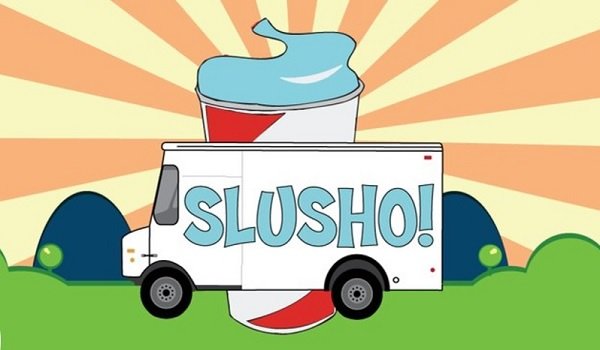
The Future Of Cloverfield
We now stand at the edge of a new viral marketing campaign, one that seemed to have started briefly at San Diego Comic Con last year, and went into the either. With a new Twitter feed for a Slusho Truck that made stops at San Diego and various cities, the film formerly known as God Particle looked to be ready for its turn in the alternate reality spotlight, as it too had been absorbed into the Cloverfield anthology. However, there have been a couple delays to the film's release date, and even a title change to Untitled Cloverfield Anthology Film, which have lead folks to wonder just what is going on, and when we'll expect a new viral campaign to start up in promotion of this latest film.
Part of the problem had been noted by a YouTube channel known as Inside A Mind, who noted that the viral campaign that looked to start with the Slusho truck may have been halted because of an internet coding snafu. Apparently, this snafu was so big it crashed the now downed sites to both Slusho and Tagruato - the former of which is still linked to that new Twitter feed. Naturally, if you're going to promote a Cloverfield movie, you need the right Alternate Reality Game campaign to back it. So there's a possibility that the reason we haven't seen anything for the Untitled Cloverfield Anthology Film is because of an error that requires a lot of fixing on Paramount's part, and as such the release date for the film finished back in 2016 has been thanks to the time needed to launch a proper, meticulous campaign.
As of now, all that's known is that this new Cloverfield story has been set to open on April 20th, 2018. Knowing the track record of the brand, we could expect the games to begin again as early as next month, or as late as March. Whenever the machine behind the Cloverfield experience decides to spring into action, it's already got a public hungry for more information waiting to tear into it. And this would have never happened if J.J. Abrams, Bryan Burk, and Matt Reeves had marketed their unknown monster movie like any other Hollywood blockbuster. Now, you don't need a full year's worth of ads to sell a movie: just an intriguing premise and/or a big name to hang the film's prospects off of.
So the next time you worry about Solo: A Star Wars Story, or another high profile film that's yet to show off any sort of footage or images close to its proposed release, keep in mind that there could be a sneaky surprise on the horizon. Thanks to Cloverfield.

Mike Reyes is the Senior Movie Contributor at CinemaBlend, though that title’s more of a guideline really. Passionate about entertainment since grade school, the movies have always held a special place in his life, which explains his current occupation. Mike graduated from Drew University with a Bachelor’s Degree in Political Science, but swore off of running for public office a long time ago. Mike's expertise ranges from James Bond to everything Alita, making for a brilliantly eclectic resume. He fights for the user.
